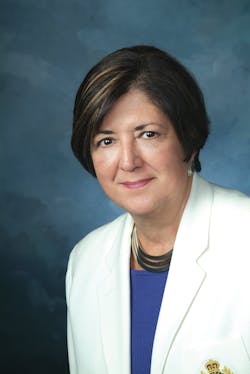Welcome to the 2018 Station Design Awards
Firehouse is pleased to present the fifth annual showcase of fire and emergency services facilities. Thirty-six fire stations and one training academy were submitted by 23 architecture firms from across the United States. Download the PDF of winners here.
The purpose of the Station Design Awards is to identify trends and educate Firehouse readers through these new public safety facilities. The trends and innovations in fire, rescue and EMS construction also serve to demonstrate the work of architectural firms from across the country. With a national collection, costs and style vary greatly and depend on the region, budget, department size, responsibilities and communities served.
As each portfolio came in, I suspected this year would be one of the toughest for the judges and I was right. Even with limited entries in a couple of categories, defining an award level involved multiple discussions and viewpoints. This year, the competition was extremely close.
We truly believe that every facility featured in this showcase is a “winner” for its department, personnel and community by offering significant improvements with a new or renovated station.
The entries to the 2018 Station Design Awards, without question, raised the bar on fire station design and construction. This year’s showcase of fire stations and a training academy are proof that the fire and emergency services are working toward building safer, healthier response facilities for their personnel.
The judges this year included two judges from last year, a deputy chief and two new architects. Judges were asked to review each entry and bring their top three choices in each category. No judge had an entry in the award program.
During the judging process, conversations circled back to several topics identified as key areas in reviewing the entries and particularly for the finalists. Those areas (in no particular order) for which each entry was reviewed were: innovation, flow, exhaust systems, life safety, decontamination and accessibility.
- Innovation was not simply design, but a unique approach to the use of space, materials and site.
- Flow referred to pattern of foot-traffic inside the station, particularly in response access to the apparatus bay.
- Exhaust systems, particularly in the bay area, were a critical discussion and not always obvious in photos. (Next year we’ll ask specifically.)
- Life safety included location of fitness rooms, segregated turnout gear storage and in particular, second-floor exits. (Several two-story facilities had only one interior stairwell and no second-floor exit.)
- Decon areas are designated areas for limiting contaminant exposure.
- Accessibility includes meeting the Federal American with Disabilities Act (ADA) required of all public facilities.
Perhaps the most significant change to fire station design is the concept of Hot Zones, first introduced by Paul Erickson, principle, LeMay Erickson Willcox Architects, in a Firehouse article in August 2014 and presented at the Station Design Conference, May 2015, in Baltimore. (Hot Zone design is the separation of “hot” or contaminated areas from “cold” or living areas.)
Erickson recalled that his first presentation of Hot Zones at the 2015 Station Design Conference, “stunned the crowd” and created a buzz. Subsequently, Erickson has presented the Hot Zone design concept to a variety of organizations and associations. Other architects have taken up the effort and are also researching ways to prohibit carcinogens and toxins from entering the living areas of fire stations and public safety facilities.
During the evaluation process, the judges agreed that the Career 1 Category Eau Claire, WI, Fire Station 10, by Five Bugles Design, was particularly noteworthy as its floor plan was “…the best decon area among all entries.”
The Shared Facility category had only one entry, the Montgomery County, MD, Public Safety Training Academy. The judges agreed the category should be changed to a Training Academy category and the facility was accorded a Silver Award.
Overall, each of the 38 entries this year were significantly advanced in providing a healthier, more gender-neutral and environmentally aware accommodation for firefighters and personnel. These changes are a credit to the educational programs and articles, as well as the efforts of architects and construction firms for sustainable, safer and healthier public safety facilities.
I disagree with an old, frequently repeated adage: The fire service is 200 years of tradition impeded by progress! Not when it comes to fire stations! Health and safety in fire stations has changed dramatically and is clearly evident in this 2018 Station Design Awards showcase.
If you are thinking about a new fire station, start your homework now. Study this collection of stations. Note what appeals for your department and consider attending the 2019 Station Design Conference next May. Learn as much as you can before you start the process and, I promise, you will save time and money.
Download the PDF of winners here.
2018 JUDGES
Johnny Fong, AIA, NCARB
Fong is a fire equipment operator/engineer of Engine 2 with the City of Reno, NV, Fire Department as well as the owner and principal of FireHouse Designs. He has a bachelor’s degree in architecture from the University of California, Berkeley, and is currently certified by the National Council of Architectural Registration Boards (NCARB) and licensed to practice architecture in multiple sites. Fong has been judging fire station designs since 2002 and authored several articles on design.
Stephen P. Kromkowski, AIA
Kromkowski is a principal architect for DLZ, an architecture-engineering firm based throughout the Midwest. He is specialized in the practice of fire station and public safety design. Kromkowski is a graduate of the University of Notre Dame and is a registered architect and interior designer in the State of Indiana, as well as nine other states. His 30 years of professional practice has included a full range of public safety project experience, ranging from new regional fire station and headquarters to small rural volunteer fire departments, as well as urban, career departments. DLZ’s fire station designs have received national recognition from Firehouse Magazine, Fire Chief, and the 2017 F.I.E.R.O. Honor Award.
Robert Manns, AIA
Manns is a founding principal of Manns Woodward Studios and has over 15 years of experience in the design of first-responder facilities. He holds both undergraduate and master of architecture degrees from The Catholic University of America. Manns has been the lead designer for more than 30 fire stations and training centers over the course of the past five years. Recent awards include a Bronze Award from Firehouse Station Design for the Lutherville Volunteer Fire Company renovation. His article, Anatomy of the Apparatus Bay, was published in the August 2017 issue of Firehouse.
Fire Marshal Laura McCarthy
McCarthy is the assistant chief and fire marshal for the Bloomington, MN, Fire Department. She has 28 years in the fire service, serving as firefighter, FMO, captain, district chief, training chief and assistant chief. McCarthy has 20 years in fire prevention/investigation division serving as fire inspector I and II, lead fire inspector and fire marshal. She is a graduate of Southwest Minnesota State University, Hennepin Technical College for Fire Science and Alexandria Technical College.
Deputy Fire Chief Scott W. Walker
Walker is the deputy chief for Addison, IL, Fire Protection District. He is a 28-year veteran of the fire service, serving as a firefighter/paramedic and promoting through the ranks to his current level as deputy fire chief. He holds a master’s degree in management and organizational behavior from Illinois Benedictine University. During his time with Addison, Walker gained experience with construction of a new station and renovations of existing fire stations.
2018 Station Design Architecture Firms
Bentley Architects + Engineers, Inc.
baeonline.com
Blalock and Partners
blalockandpartners.com
BKV Group
bkvgroup.com
BRW Architects
brwarch.com
CDR Maguire, Inc.
cdrmaguire.com
Charles Cunniffe Architects
ccaaspen.com
CR architecture + design
cr-architects.com
Five Bugles Design/Wendel
fivebuglesdesign.com
Jackson Brown Palculict Architects
jbparchitects.com
Kirkpatrick Architecture Studio
k-a-studio.com
LeMay Erickson Willcox Architects
lewarchitects.com
Mackenzie
mcknze.com
Martinez Architects
martinez-architects.com
Mitchell Associates Architects
mitchell-architects.com
Pacheco Ross Architects
pra-pc.com
PGAL
pgal.com
Saccoccio & Associates
sa-architects.com
Short Elliot Hendrickson, Inc (SEH)
sehinc.com
Stewart-Cooper-Newell Architects
Fire-Station.com
TCA Architecture Planning
tca-inc.com
TSK Architects
tska.com
Wold Architects and Engineers
woldae.com
ZBA Architecture
zbaarchitecture.com

Janet A. Wilmoth | Special Projects Director
Janet Wilmoth grew up in a family of firefighters in a suburb of Chicago. Wilmoth, who is owner of Wilmoth Associates, worked with Fire Chief magazine for 27 years until it closed in 2013. She currently is the project director for Firehouse, overseeing the Station Design Conference.






